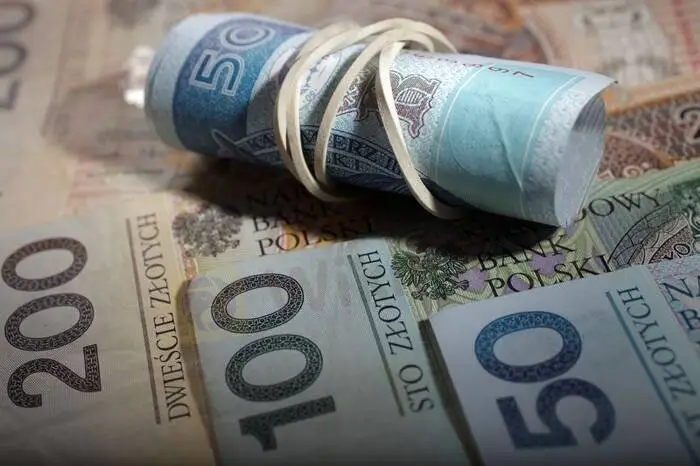简体中文
繁體中文
English
Pусский
日本語
ภาษาไทย
Tiếng Việt
Bahasa Indonesia
Español
हिन्दी
Filippiiniläinen
Français
Deutsch
Português
Türkçe
한국어
العربية
Playing catch-up, zloty set to gain the most in CEE: Reuters poll
Abstract:The Polish zloty should lead gains among central European currencies over the next 12 months as it plays catch-up with its peers, a Reuters poll showed on Thursday, although the start of U.S. Fed rate hikes will take some shine off the region.

Expectations of rising U.S. interest rates and a strengthening dollar should continue to drag on central Europe now the Federal Reserve has flagged a March interest rate rise.
But with policy tightening already underway in central Europe, currencies have started 2022 with gains, led by a hefty 3.9% rise in the Hungarian forint and 2.4% increase in the Czech crown, as of Tuesdays close.
The zloty, up only half a percent to begin the year, will appreciate with an expected 1.7% rise over Tuesday‘s close, firming to 4.495 to the euro in a year’s time.
“Generally all the currencies should benefit from tightening of local monetary policy,” said Krystian Jaworski, senior economist at Credit Agricole in Warsaw.
“Still, the intensifying market expectations of tightening by the Fed and European Central Bank will limit the room for significant appreciation.”
The National Bank of Poland, battling inflation that is already at a more than two-decade high of 8.6%, has lifted its main rate by 215 basis points to 2.25% since October. More hikes are expected.
Similarly, the Czech National Bank, the regions most aggressive in policy tightening amid the prices spike, meets on Thursday and analysts forecast a 75 basis point hike to the main rate, putting it above 4% for the first time in 20 years.
But rates should soon peak and the poll saw the crown, which hit its highest since 2011 in January, easing 2.1% to 24.8 to the euro in the coming year, a similar forecast to a poll month ago.
Hungarys forint should reach stronger ground in the coming 12 months after short-term easing in the first quarter. Analysts see the forint at 353.50 to the euro in a year, a 0.5% rise.
“No matter how strong the (central bank‘s) push to bring down inflation, the market’s focus could easily wander to the upcoming risk events, creating some short-term selling pressure,” ING said, mentioning Budapests disputes with the European Union and an upcoming April election.
In Romania, the leu, a laggard in the region due to budget and political uncertainties while its central bank has been less aggressive in policy tightening, was forecast to ease to 5.00 to the euro, 1.1% down from Tuesdays close.

Disclaimer:
The views in this article only represent the author's personal views, and do not constitute investment advice on this platform. This platform does not guarantee the accuracy, completeness and timeliness of the information in the article, and will not be liable for any loss caused by the use of or reliance on the information in the article.
Read more

WikiEXPO Dubai 2024 will take place soon!
2 Days Left!

WikiEXPO Dubai 2024 is coming soon
3 Days Left!

WikiEXPO Dubai 2024 is set to open!
4 Days Left

7 Days Left!WikiEXPO Dubai 2024 is about to make a stunning debut!
Seeing Diversity Trading Safely
WikiFX Broker
Latest News
Saxo & Portuguese Bank Partnership
SEC Fines Broker-Dealers $275K for Incomplete SAR Filings
Elon Musk Warns of Imminent US Bankruptcy | Bitcoin Retreats from $100K
UK FCA Fines Barclays £40 Million Over 2008 Deal
WikiEXPO Global Expert Interview: Advanced Practices and Insights in Financial Regulation
Justin Sun Invests $30M in Trump-Backed World Liberty Financial
Lured by False Promises: Malaysian Driver Lost RM218K to an Investment Scam
FTX Sets March 2025 Timeline for Creditor Payouts: What It Means for Investors
What is an Economic Calendar? How it works
Pros & Cons of Automated Forex Trading
Currency Calculator


